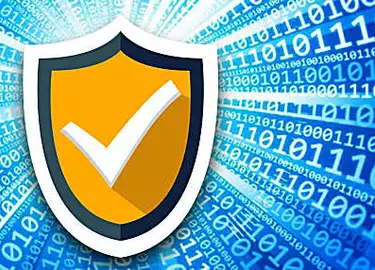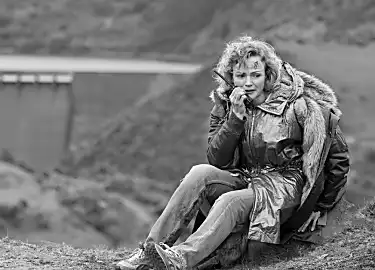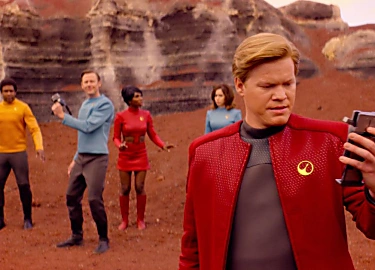via Daily Prompt: Viable
It’s been more than 100 days and Puerto Rico is still in the longest blackout in US history
More than 43 percent of Puerto Ricans still don’t have power, and some may not get it until May.
Hundreds of thousands of Americans across Puerto Rico and the US Virgin Islands rang in the new year in darkness, still mired in the longest blackout in US history.
It’s been more than 100 days since Hurricane Maria ravaged the electrical grids of these two US territories, but 14,815 utility customers in the US Virgin Islands, more than a quarter of the total customers, still don’t have electricity. In Puerto Rico, 675,000 customers, or 43 percent of the total, lack power.
The blackout stemming from Hurricane Maria was already the longest in US history back in October, according to an assessment by the Rhodium Group, a policy analysis firm.
Rhodium compared the power outages stemming from Hurricane Maria as of October 26 with those from other events in US history. As you can see, Hurricane Maria disrupted electricity more than any other event by a long shot:
/cdn.vox-cdn.com/uploads/chorus_asset/file/9553023/blackouts.jpg) Rhodium Group
Rhodium GroupPeter Marsters, a research analyst at the Rhodium Group, explained that the numbers reflect how many utility customers lost power multiplied by how long they were without power.
And the term “customer” obscures the true impact of these outages. A household of two and a household of 10 both count as one customer each, since there’s usually only one electricity bill per home.
This represents 43% of all customers on the island (remember, 1 customer=1 meter, not 1 person). 105 days and counting. https://twitter.com/DavidFerris/status/948720550603616265 …
It’s worth noting that of the top 10 outages, nine were due to hurricanes, and eight occurred after 2000. This is in part due the fact that populations are growing and more are living in harm’s way, increasing the impact of extreme weather. That’s part of what made 2017 the most expensive year ever for natural disasters in the United States.
Though power grids across the country do try to anticipate blackouts, they only prepare for disruptions measured in minutes, not days, weeks, or months.
“These mostly weather-driven events are magnitudes above [outages in] day-to-day grid operation,” Marsters said.
In Puerto Rico and the USVI, the outages have led to ongoing health and environmental crises as idled sanitation systems have forced some to drink from contaminated wells and other water sources. The power losses are making it more difficult to contain hazardous waste.
The outages have proved deadly, with people unable to use lifesaving medical equipmentlike dialysis machines, and they’ve contributed to Puerto Rico’s official death toll of 64.
As we’ve reported here at Vox, the actual number of fatalities is likely much higher, a development that has prompted lawmakers to ask for an audit. BuzzFeed also reported that there have been more than 900 cremations across the island since the hurricane without medical examination.
And electricity may not be restored fully in Puerto Rico and the USVI until May, since emergency managers are still reeling from the devastation across the United States in 2017, spreading thin reconstruction supplies like utility poles and power lines across all disaster areas spanning from California to Florida.
Vox’s Alexia Fernández Campbell reported that the Puerto Rican government’s own missteps in the reconstruction effort, including botching a massive recovery contractwith Whitefish Energy, have further hampered the power restoration effort.
Such outages also carry a massive price tag for the economy.
The financial services firm Allianz estimated that a 30-minute power loss costs an average of $15,709 per customer for medium and large industrial facilities, while an eight-hour outage costs an average of $94,000.
“Even short blackouts — which occur several times a year in the US — add up to an annual estimated economic loss of between US$104 and US$164 billion,” the firm found.
The power losses will also have huge financial consequences for Puerto Rico, which was already in dire economic straits before the storm.
Outages from Hurricane Maria are also having knock-on effects. As Vox’s Yochi Dreazen reported from Puerto Rico, the power losses are “significantly slowing the entire US relief effort, and preventing other vital parts of the island’s battered infrastructure from coming back online.”
Power restoration work in these hurricane-hit territories is proving slow, sporadic, and expensive. Much of the infrastructure has been physically knocked down, and hardware has to come in through ports that are already clogged with relief supplies.
While there has been some progress in getting the lights back on and entrepreneurs are using the region to enact their vision for a cleaner, more resilient power grid, most in Puerto Rico and the US Virgin Islands are relying on stopgap measures like gasoline-powered generators.
“These numbers are going to rise,” Marsters said. “Every customer-hour loss adds to the cumulative total.”
Was this article helpful?
IN THIS STORYSTREAM
Hurricane Maria: devastation in Puerto Rico
NEXT UP IN ENERGY & ENVIRONMENT
-
- Winter storm 2018: almost the entire East Coast is covered in snow
- Southern California is (still) on fire. Now it has the largest blaze in state history.
- Solar panels have gotten thinner than a human hair. Soon they’ll be everywhere.
- Energy markets, not coal bailouts, will keep the East Coast warm this week
- One year in, is Trump helping the US coal industry? Not really.
- The bomb cyclone isn’t a winter hurricane — just a bad storm with good branding
Vox Sentences
The news, but shorter, delivered straight to your inbox.








/cdn.vox-cdn.com/uploads/chorus_image/image/58210121/shutterstock_124814944.0.0.jpg)
/cdn.vox-cdn.com/uploads/chorus_image/image/58207639/660234228.jpg.0.jpg)
/cdn.vox-cdn.com/uploads/chorus_image/image/58209973/901229296.jpg.0.jpg)
/cdn.vox-cdn.com/uploads/chorus_image/image/58209043/shutterstock_687427096.1515097870.jpg)
/cdn.vox-cdn.com/uploads/chorus_image/image/56412189/GOT2019.1515093838.jpeg)
/cdn.vox-cdn.com/uploads/chorus_image/image/58192189/Screen_Shot_2018_01_03_at_1.21.08_PM.1515002057.png)